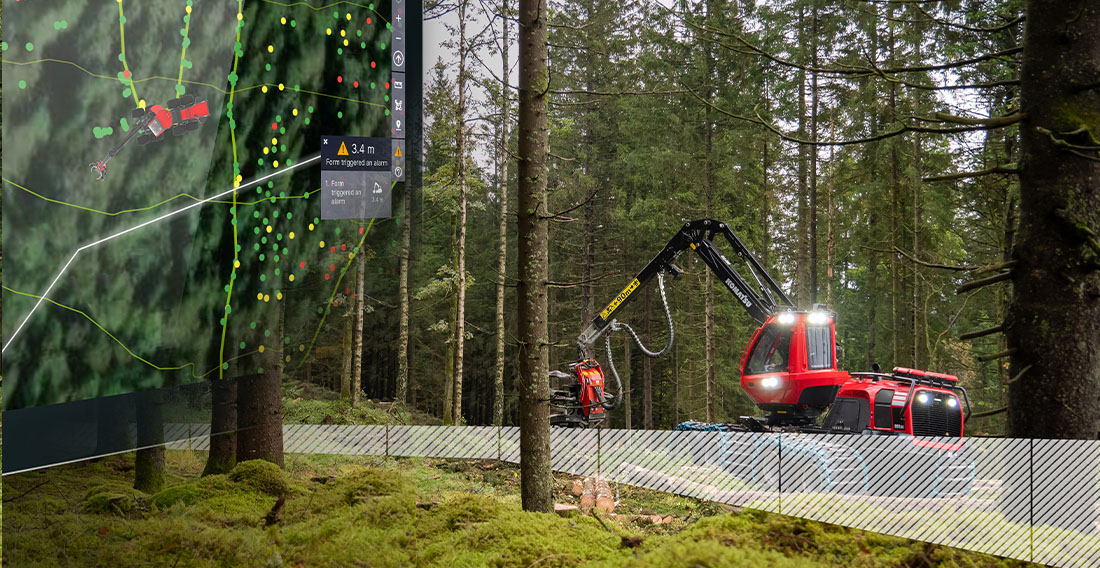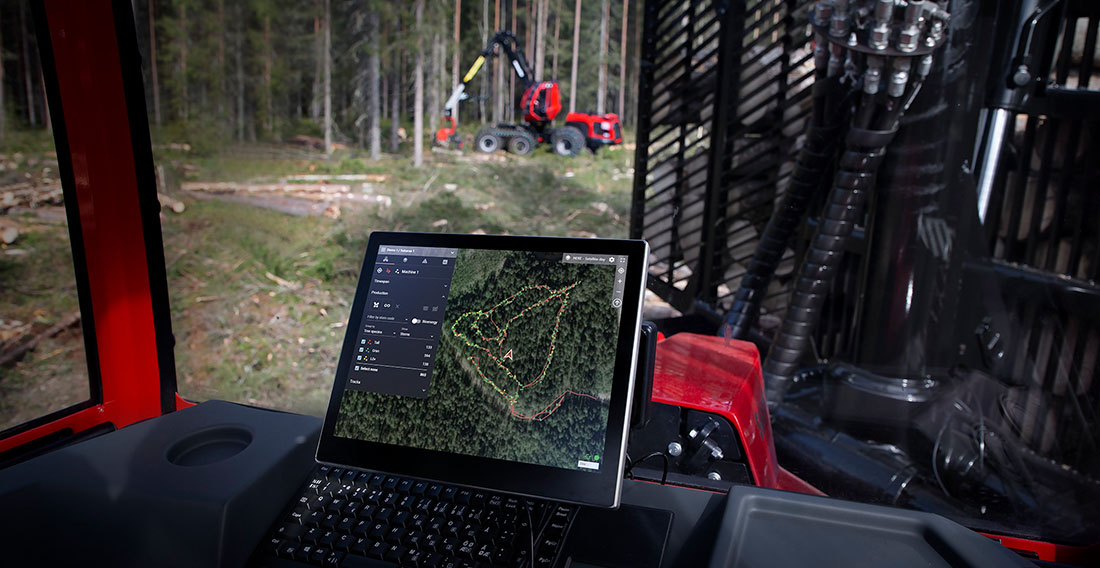

Forests perform heroic work for the planet. They help sustain a healthy atmosphere, control soil erosion and floods, and support plant and animal species essential to healthy ecosystems. They are considered a critical factor in controlling climate change.
Humankind relies on forests, too. The timber they produce supports the needs of society through fuel, paper products and building materials.
Balancing the demands of both is critical and getting harder all the time. Wildfires, climate change, infestation, disease and encroaching population growth are threatening forests across the globe and the needs they meet.

Given these threats, Komatsu’s pursuit of sustainable forestry methods is taking on a new sense of urgency as stakeholders look for ways to harvest judiciously, react to disease and infestations quickly, replant effectively and minimize the impact of human activity on this precious natural resource. Forestry has always meant being productive, accurate and efficient in tough conditions. Increasingly, it also means confronting existential threats
Simon Wuetz provides fleet support for Komatsu Forest, equipping forest owners and managers with machines to harvest and transport timber. It’s a job that requires him to understand their challenges and supply technology and equipment to meet them. In recent years, controlling a tiny beetle has been one of those challenges.
In his 15-plus years working with customers throughout Europe, Wuetz has watched the devastating effects of the spruce bark beetle, which infects trees weakened by drought and heat. In Germany, where he is based, unusually hot and dry summers have made vast expanses of forests vulnerable to the pest. A 2023 government survey found that 79% of all trees in Germany are sick, dying or dead.
There is no way to stop the beetle once it has infested a tree, so the only strategies are to limit its spread and, long-term, diversify forests with trees that are more heat- and pest-resistant. Scientists and conservationists have identified multiple ways to accomplish both, including biological controls and, in some cases, pesticides. But thinning — the quick removal of infested or weakened trees — is a critical plan of attack. Foresters are removing and transporting dead or dying trees at a volume unheard of before the beetle.
“For years, the volume of logging in Germany was typically 50 million cubic meters per year, but it has increased tremendously because of this horrible beast,” said Wuetz.
Germany is not alone. Thinning is an important strategy worldwide as beetle species and other pests wreak havoc on forests around the globe. For instance, the Mountain Pine Beetle has infested over 18 million hectares (about 69,500 square miles) of pine forests in the western United States and Canada, and the Cypress Aphid has affected around 100,000 hectares (about 386 square miles) of cypress trees in Ethiopia.
Thinning infested trees involves more than meets the eye, requiring speed, precision and complex logistical planning. Once infestations are identified, it’s critical to pinpoint their locations in an area that can cover thousands of hectares, remove them quickly and transport them to a secure place, all while working in remote areas and minimizing damage to healthy trees.
It’s a challenge Komatsu Forest was ready for. In addition to harvesters and forwarders designed to be compact, move efficiently and reduce their impact on the environment, Komatsu has designed technology to help foresters manage the complexities of the bark beetle battle. “We have the machines to do this work, but we also make the machines smart,” said Wuetz.

A suite of applications and on-machine technology equips forest managers to accurately map a targeted area, identify specific trees to harvest, design efficient routes to take and analyze progress continuously. Called Smart Forestry, these solutions supply managers and operators with tools to make smart decisions, such as taking the shortest route to a targeted area of timber, using digital fences to secure off-limits areas or tracking the activity of a machine
This means an operator in the cab of a harvester can visualize on a screen, down to a few centimeters’ margin of error, how close they are to their targets. An alarm can sound if they are getting too near a healthy tree or deviating from their travel route.

Functions like these are propelling more sustainable approaches to forest management that begin with tree planting and forestation and continue through the life cycle of a harvested tree, all while maintaining a healthy forest ecosystem.
Thinning and selective cutting not only keep disease from spreading, but also reduce fire hazards, make space for young trees to thrive, minimize harm to natural habitats and aid water management. As the forest thrives, trees are harvested with methods that protect the porous forest floor and reduce disturbance to younger trees and diverse plant and animal life.
Increasingly, the forestry industry is discovering the value of technology to meet these goals while keeping up with demand. Data collected from satellites and drones can be analyzed to help pinpoint ideal driving routes, track forest volume and map optimum planting schemes. Once uploaded to a machine, sensors can tell an operator whether they’re about to remove the right tree or go off course
As one of the world’s largest forest machine makers, Komatsu understands its role in preserving a resource that is critical to both society and the environment. Wuetz and his colleagues work closely with forestry customers to balance sustainability and productivity
“We take a multifaceted approach to this important challenge, with machines and technologies that help minimize disturbance and help maximize both production and safety,” Wuetz said. “Responsible forestry practices that can meet the needs of society require the best possible equipment and solutions, and we are committed to providing both.”
